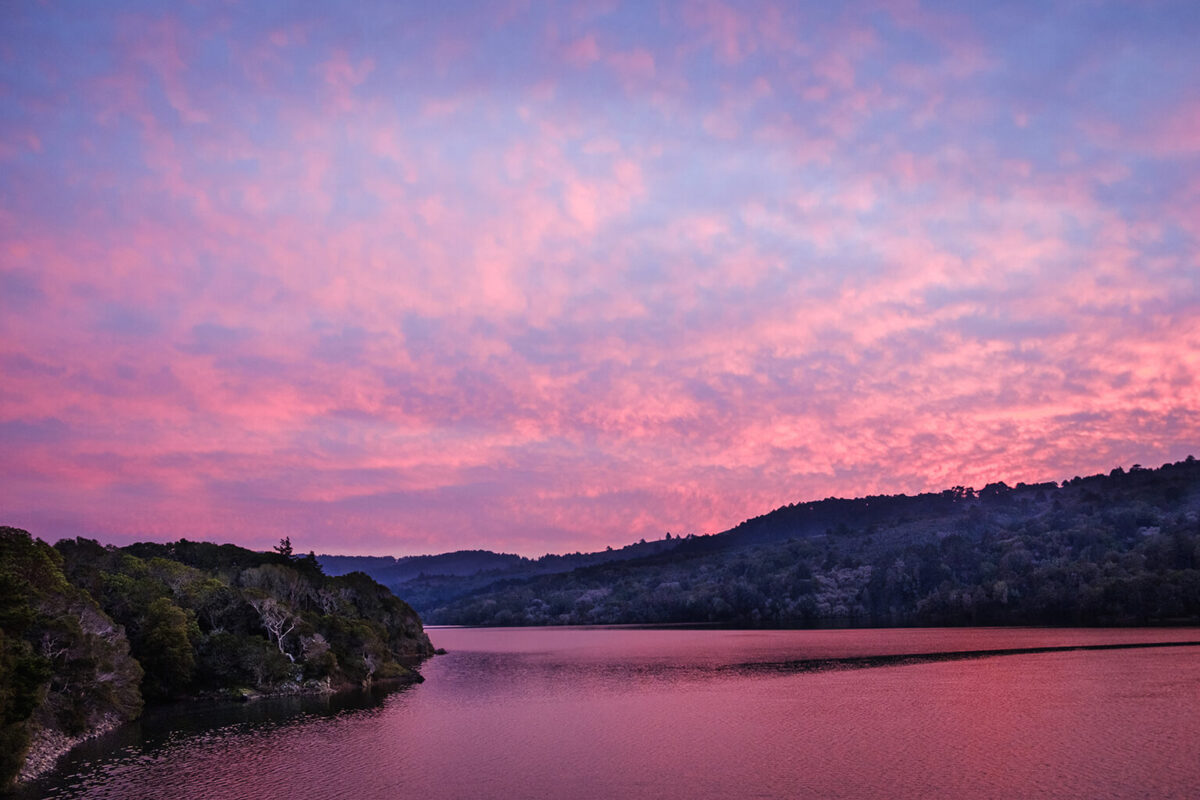Words by Johanna Harlow
At Crystal Springs Reservoir, the midday heat isn’t keeping anyone away. A flock of about a dozen pedestrians stroll along the Sawyer Camp Trail, followed by a pair of coworkers in business button-ups and an older couple with walking poles. Next, several joggers zip by, their sneakers drumming against the pavement.
“This trail almost didn’t exist,” says Ranger Katherine Wright, who’s happy to walk and talk about this local gem. The noonday sun glints off the gold badge pinned on her shirt and dazzles off the man-made lakes. “When they were going to create Highway 280, they had discussed building it closer to the reservoirs and basically eliminating this road. But a lot of people fought to keep it.”
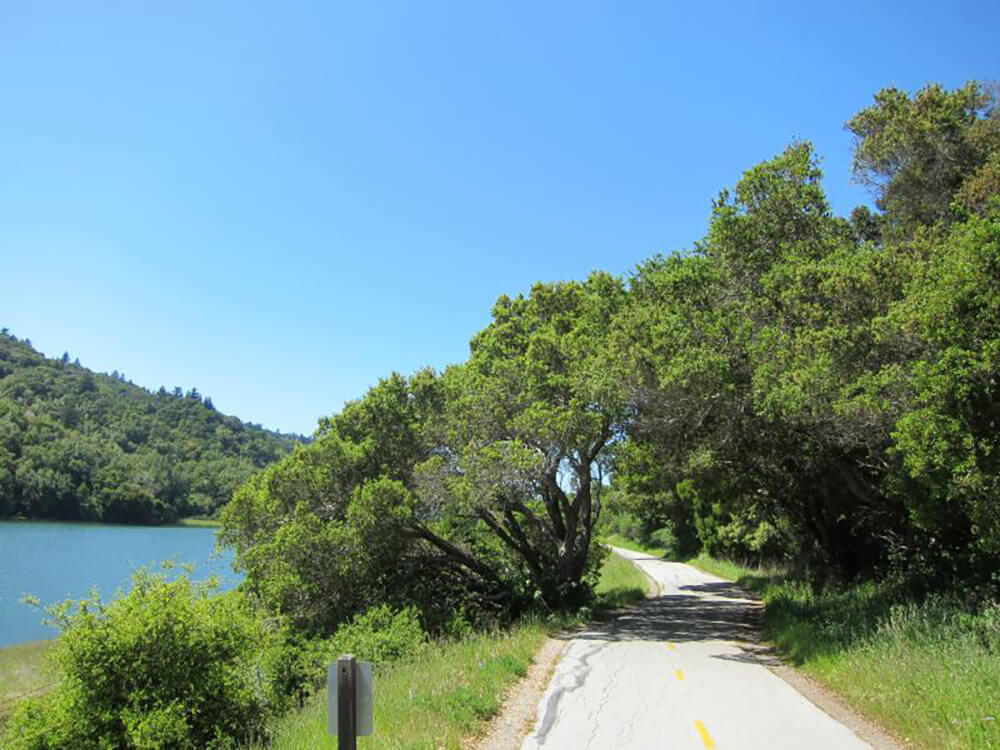
Cover Photo: Courtesy of Bgwashburn / Photo: Courtesy of Neeta Lind
A fortuitous move. These days, the area sees over 325,000 visitors annually. Thanks to an easement with San Francisco Public Utilities Commission, which owns the watershed, San Mateo County Parks maintains the area and keeps it pristine. “It is the most popular trail in the county now,” says Katherine. Not only does the trail present stunning views of the reservoir that fills the rift valley formed by the San Andreas Fault, it also offers accessible paved paths. “It’s a great place to come out and recreate in whatever fashion you want to,” Katherine says. Even cyclists, skaters and equestrians are welcome.
Considering the numbers, you’ve probably visited the reservoir at one time or another. But how well do you know this local gem? It’s time to take a deep dive into all things Crystal Springs.
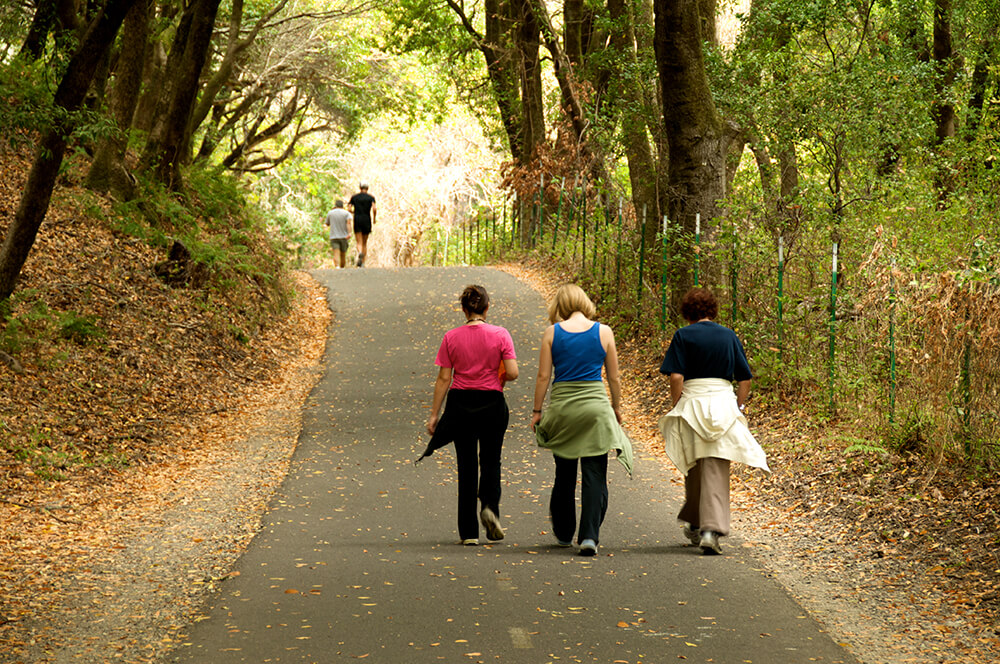 Photo: Courtesy of San Mateo County Parks
Photo: Courtesy of San Mateo County Parks
Down the Path of History
Though you’ll see cyclists and strollers on the reservoir’s trails today, take a moment to imagine stagecoaches rumbling and rattling along this road. During the Gold Rush, travelers used the route to get from Millbrae to Half Moon Bay (known back then as Spanish Town).
“There was a little inn to stop and stay,” shares Katherine. A man by the name of Leander Sawyer resided somewhere around the halfway point of the trail we’re currently treading. At Sawyer’s Camp (the trail’s namesake), Leander provided food and lodging for travelers, while also raising cattle and training circus horses.
Katherine heads the interpretive division of the San Mateo County Parks department in charge of education and community engagement. “Trying to connect people to parks as well as parks to people,” she summarizes with a smile. She adds that American settlers weren’t the first ones here. Before them, intrepid Spanish explorers traversed this region—Gaspar de Portolá camped here with his 1769 expedition, as did Juan Bautista de Anza several years later. Long before they arrived, the indigenous Ohlone hunted and gathered on this bountiful land.
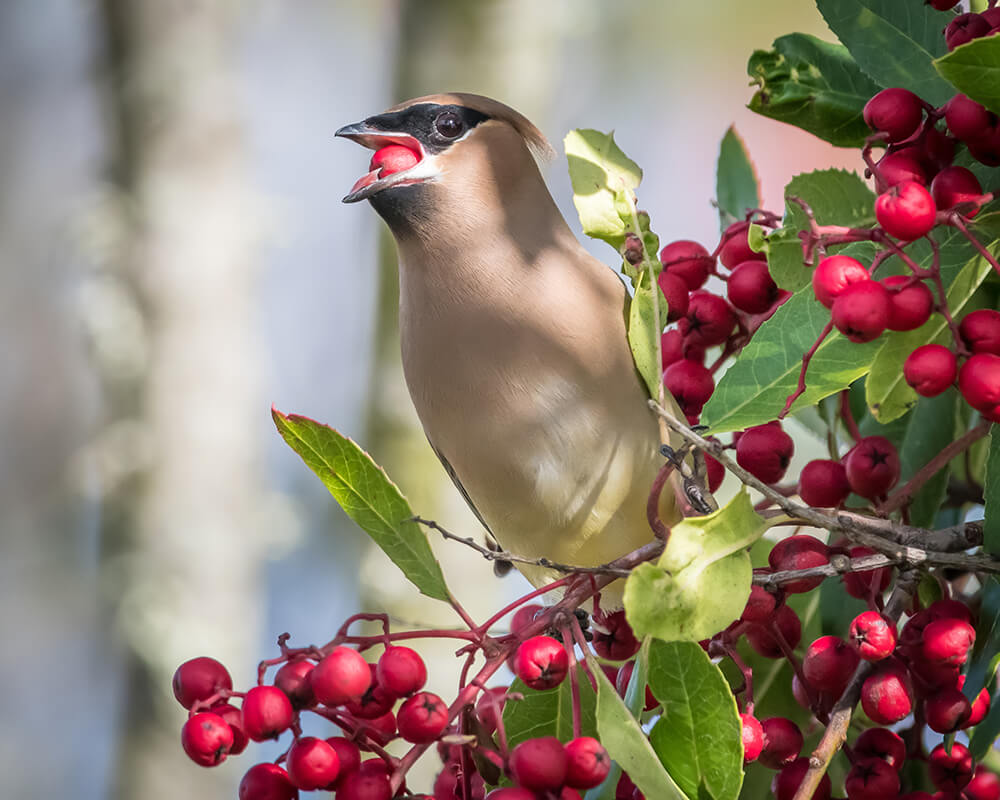 Photo: Courtesy of Becky Matsubara
Photo: Courtesy of Becky Matsubara
Flourishing Flora and Fauna
As we rest on a bench in the shade, a western fence lizard starts doing pushups, striving to impress us. “There are large sections that aren’t shaded, so it heats up really nicely, which the reptiles like,” says Katherine, noting it’s wise to keep an eye out for the occasional rattler or king snake.
A considerable number of critters call Crystal Springs Reservoir home, with nearly 50 species of mammals sighted here. Mule deer and brush rabbits nibble on its shrubs—also attracting the coyotes, gray foxes, bobcats and occasional mountain lion that consider them a tasty delicacy. Over 180 species of birds have also been identified around the area, including turkeys and towhees, sparrows and scrub jays, hawks and hummingbirds.
Excitingly, a pair of bald eagles have chosen to take up residence at the reservoir. “They found the first nesting pair in this county, here in this watershed,” says Katherine. “It was in 2012, for the first time in almost a hundred years. We see them every year, re-establishing their nest and having young.” It’s always a good sign when the wildlife chooses you.
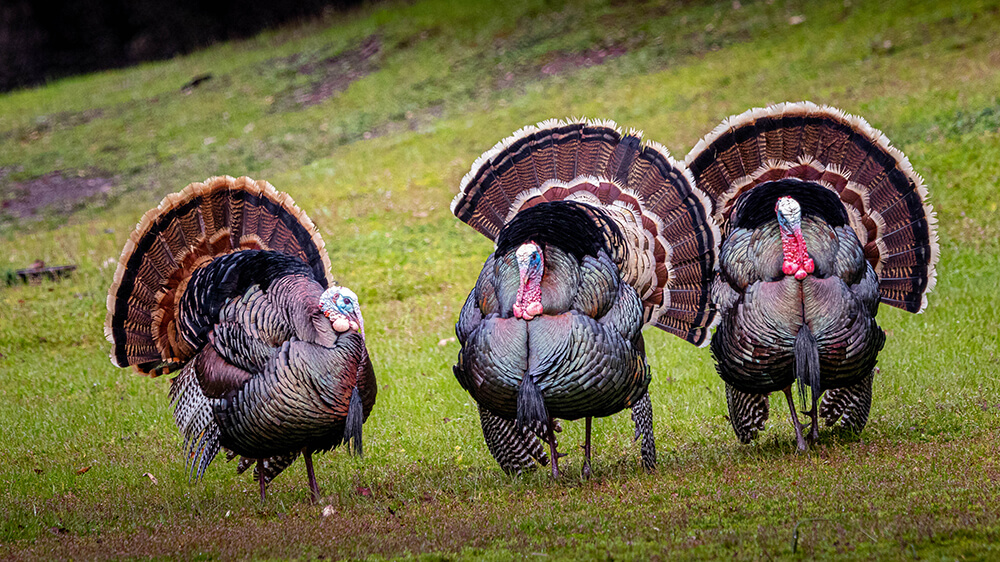 Photo: Courtesy of Charlie Day
Photo: Courtesy of Charlie Day
Most exceptional among the area’s flora is an ancient bay tree, which holds court above the buckeyes and blackwoods. Aged over 600 years, this natural wonder is the oldest of its species in the state. It’s called the Jepson Laurel, after dedicated botanist and pioneer explorer Willis Linn Jepson, who wrote 71 field journals with observations on local plants, geography and history.
All too soon, Katherine and I have returned to the trailhead. Somewhere a songbird warbles a farewell. “I grew up in San Mateo,” she tells me. “It’s nice being close to places like this that feel kind of wild—but then you go back home and you’re in a neighborhood!”
Reservoir Lore It’s rumored that the reservoir is teeming with huge trout. These tales, however, are unconfirmed since you aren’t allowed to fish (or swim) in the reservoir, and officials will slap a large fine on anyone caught with fishing gear in their possession. Wistful anglers can only dream of the impressive beasts lurking in the reservoir’s depths.
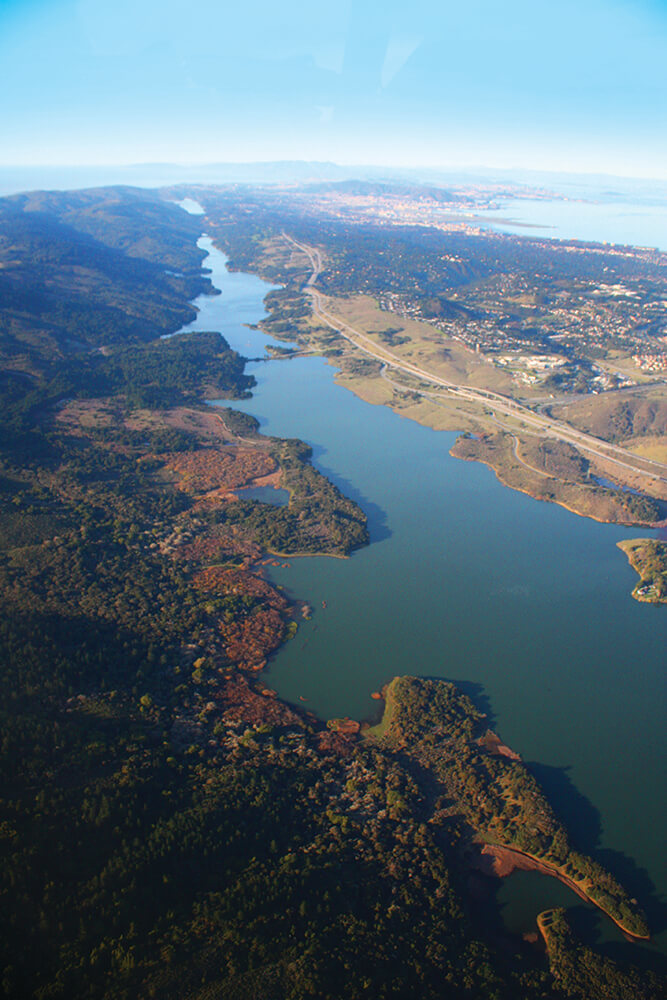 Photo: Courtesy of Mark Doliner
Photo: Courtesy of Mark Doliner
Damming History
My Crystal Springs quest is not yet at an end. The reservoir has its own history to tell—apparently with its fair share of drama. To get to the bottom of it, I turn to podcaster Olivia Allen-Price, who has covered the topic in an episode of her KQED show Bay Curious.
It starts back when the promise of a gold grab exploded San Francisco’s population. Water became increasingly scarce, Olivia explains. “Spring Valley Water Company buys up a lot of the land south of San Francisco, and it’s this private company that’s providing water to San Francisco, at what a lot of people say were not very fair prices.” Their stranglehold on this essential commodity became a serious problem.
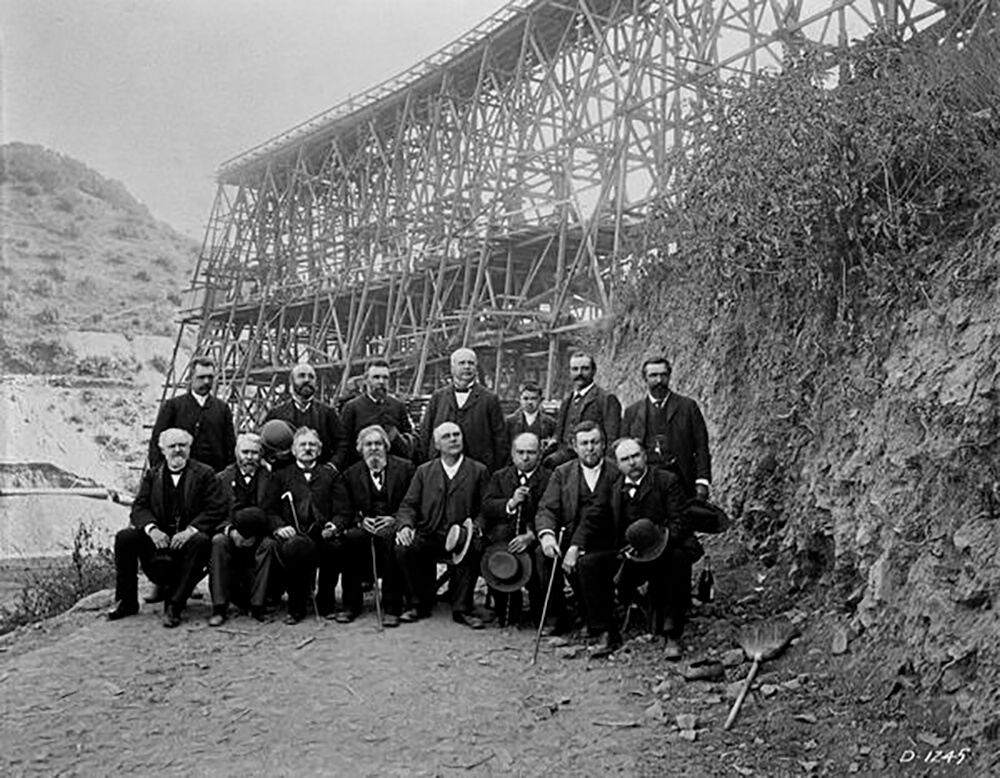
Photo: Courtesy of San Francisco History Center, San Francisco Public Library
Around the same time, a resort village with a dairy, farms and several hotels rose up in a luscious valley south of the city, according to Redwood City Pulse. They called it Crystal Springs. For a time, well-to-do San Franciscans planned their getaways here. But it was on leased land belonging to … Spring Valley Water Company. Looking to expand its watery empire, the company started planning a reservoir where the village stood. The hotels were demolished and by the late 1870s, the area had been completely abandoned. In 1888, the water company completed construction of the dam—at the time, the largest concrete structure in the world—and what was left of this ghost town was consigned to a watery grave.
Fast-forward to the catastrophic San Francisco 1906 earthquake and fire. It was estimated that the fires caused somewhere between 80% and 95% of the disaster’s destruction. “There was difficulty putting some of the fires out,” Olivia notes. “Sourcing water becomes a hot topic.” After a long battle, the city finally managed to buy out the water company in 1930, acquiring 62,500 acres of watershed land. Four years later, San Francisco began pumping in millions of gallons from Yosemite’s Hetch Hetchy reservoir.
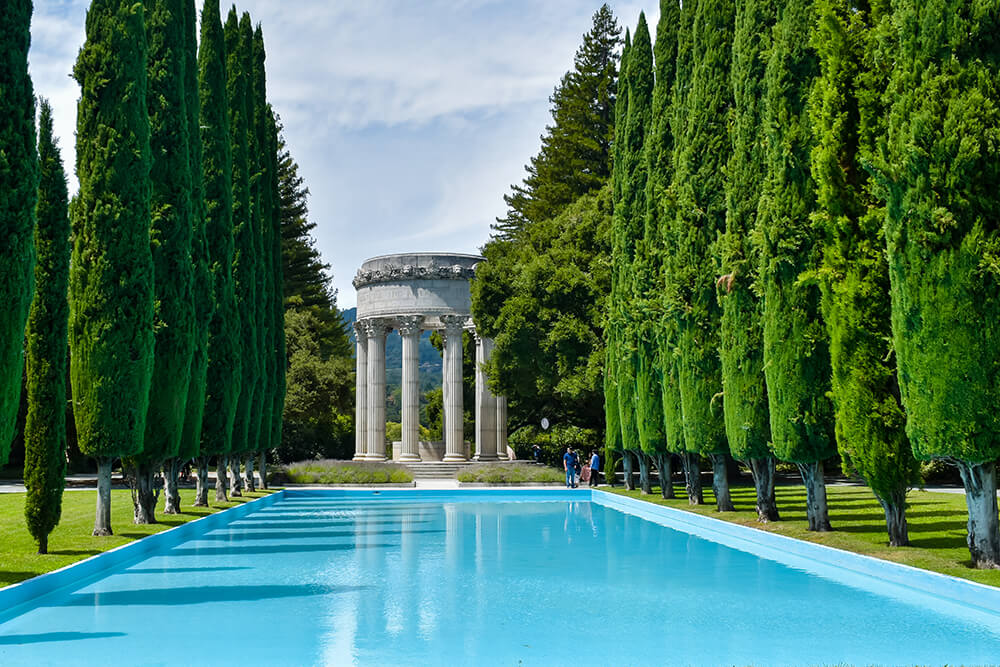 Photo: Courtesy of Navaneth KN
Photo: Courtesy of Navaneth KN
Waters in the Wilderness
To celebrate this rich history, pay a visit to the Pulgas Water Temple, a grand structure with fluted Corinthian columns just down the road. Constructed to commemorate the completion of the Hetch Hetchy Aqueduct, it was erected right above the huge water pipe’s terminus. A plaque with a biblical inscription from Isaiah 43:20 reads: “I give waters in the wilderness and rivers in the desert, to give drink to my people.”
Peer down the grate-covered hole at the temple’s center and you’ll find a watery vault below. “ We talked to a lot of people who were around in probably the ‘60s and ‘70s, and would go there as young people,” recalls Olivia. “Back in the day, apparently, there was no grate. So high schoolers would jump into the water temple. It was like a water slide that would then spit you out into the reservoir—which sounds terrifying, but also pretty fun!”
We recommend you conclude your visit by raising your water bottle to those who found a way to bring a steady stream of water to our homes on the Bay, then taking a long, refreshing swig.


